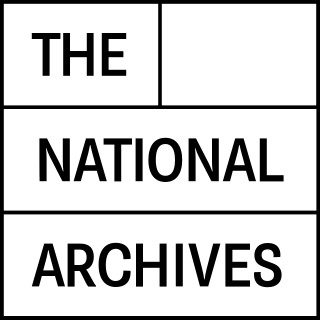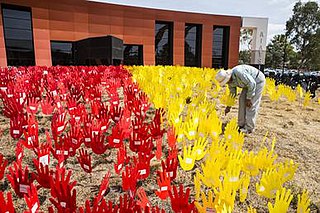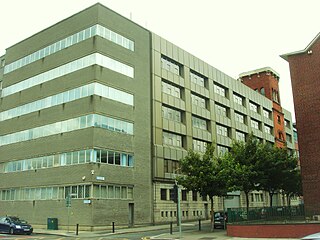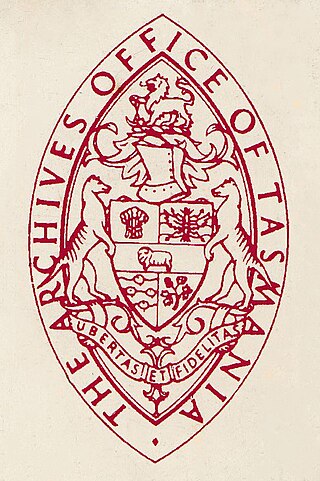The Australian Security Intelligence Organisation is Australia's national security agency responsible for the protection of the country and its citizens from espionage, sabotage, acts of foreign interference, politically motivated violence, attacks on the Australian defence system, and terrorism. ASIO is part of the Australian Intelligence Community and is comparable to the FBI (US) and MI5 (UK).

Anzac Day is a national day of remembrance in Australia and New Zealand that broadly commemorates all Australians and New Zealanders "who served and died in all wars, conflicts, and peacekeeping operations" and "the contribution and suffering of all those who have served". Observed on 25 April each year, Anzac Day was originally devised to honour the members of the Australian and New Zealand Army Corps (ANZAC) who served in the Gallipoli campaign, their first engagement in the First World War (1914–1918).
Archives New Zealand is New Zealand's national archive and the official guardian of its public archives. As the government's recordkeeping authority, it administers the Public Records Act 2005 and promotes good information management throughout government.

The National Archives is a non-ministerial department of the Government of the United Kingdom. Its parent department is the Department for Culture, Media and Sport of the United Kingdom of Great Britain and Northern Ireland. It is the official national archive of the UK Government and for England and Wales; and "guardian of some of the nation's most iconic documents, dating back more than 1,000 years." There are separate national archives for Scotland and Northern Ireland.

The National Library of Australia (NLA), formerly the Commonwealth National Library and Commonwealth Parliament Library, is the largest reference library in Australia, responsible under the terms of the National Library Act 1960 for "maintaining and developing a national collection of library material, including a comprehensive collection of library material relating to Australia and the Australian people", thus functioning as a national library. It is located in Parkes, Canberra, ACT.

The Australian Institute of Aboriginal and Torres Strait Islander Studies (AIATSIS), established as the Australian Institute of Aboriginal Studies (AIAS) in 1964, is an independent Australian Government statutory authority. It is a collecting, publishing, and research institute and is considered to be Australia's premier resource for information about the cultures and societies of Aboriginal and Torres Strait Islander peoples.

ANZAC Square is a heritage-listed town square and war memorial located between Ann Street and Adelaide Street, in Brisbane, Queensland, Australia. It is a state memorial to the men and women who participated in overseas armed service and is named in honour of the Australian and New Zealand Army Corps. ANZAC Square is adjacent to ANZAC Square Arcade.

General Register Office or General Registry Office (GRO) is the name given to the civil registry in the United Kingdom, many other Commonwealth nations and Ireland. The GRO is the government agency responsible for the recording of vital records such as births, deaths, and marriages, which may also include adoptions, stillbirths, civil unions, etc., and historically, sometimes included records relating to deeds and other property transactions.
The Australian colonies and in the nineteenth century created offices involved in dealing with indigenous people in the jurisdictions.
The Department of the Prime Minister and Cabinet (PM&C) is an Australian Government public service central department of state with broad ranging responsibilities, primary of which is for intergovernmental and whole of government policy coordination and assisting the prime minister of Australia in managing the Cabinet of Australia. The PM&C was established in 1971 and traces its origins back to the Prime Minister's Department established in 1911.

The National Archives of Ireland is the official repository for the state records of Ireland. Established by the National Archives Act 1986, taking over the functions of the State Paper Office and the Public Record Office of Ireland. In 1991, the National Archives moved to its current premises in Bishop Street, Dublin. The Archives stand on the site of the Jacob's Factory, one of the garrisons held by rebels during the 1916 Easter Rising.
The State Records Office of Western Australia (SRO) is the Western Australian government authority with responsibility for identifying, managing, preserving and providing access to the state's archives. The SRO also delivers best-practice records management services to state and local government agencies.

The National Film and Sound Archive of Australia (NFSA), known as ScreenSound Australia from 1999 to 2004, is Australia's audiovisual archive, responsible for developing, preserving, maintaining, promoting and providing access to a national collection of film, television, sound, radio, video games, new media, and related documents and artefacts. The collection ranges from works created in the late nineteenth century when the recorded sound and film industries were in their infancy, to those made in the present day.

Public Record Office Victoria (PROV) is the government archives of the Australian State of Victoria. PROV was created by the Victorian Public Records Act 1973 with responsibility for the better preservation management and utilisation of the public records of the State. It is an agency of the Department of Government Services.

Trove is an Australian online library database owned by the National Library of Australia in which it holds partnerships with source providers National and State Libraries Australia, an aggregator and service which includes full text documents, digital images, bibliographic and holdings data of items which are not available digitally, and a free faceted-search engine as a discovery tool.
State Records of South Australia (SRSA) is the archives and records management authority for the Government of South Australia. It is responsible for storing, managing, protecting and providing access to the official records of the South Australian Government, as well as providing South Australian state and local government agencies with advice about records management, freedom of information and information privacy. State Records was established under the State Records Act 1997
The Australian Joint Copying Project (AJCP) was a National Library of Australia and State Library of New South Wales led initiative to microfilm archives and records from the United Kingdom and Ireland relating to Australia and the Pacific.

Thea Melvie Exley was an Australian archivist and art historian, and the first woman to head a regional office of the Australian Commonwealth Archives Office. She was also its first national Senior Archivist Reference and Access and the first Director Preservation at the Australian Archives. Exley was an inaugural member of the Australian Society of Archivists and served as a Councillor from 1977 to 1979.

The Archives Office of Tasmania (AOT), 1965-Ongoing is the Tasmanian government agency responsible for the archival records of the State of Tasmania. The Archives Act 1965 established the Archives Office of Tasmania as an independent entity, but it remained within the then Tasmanian State Library Department.
Adrian Cunningham is an Australian archivist who worked for many years at the National Archives of Australia. He is known for his contributions to the practice of digital records management, including development of international standards in this field.
















